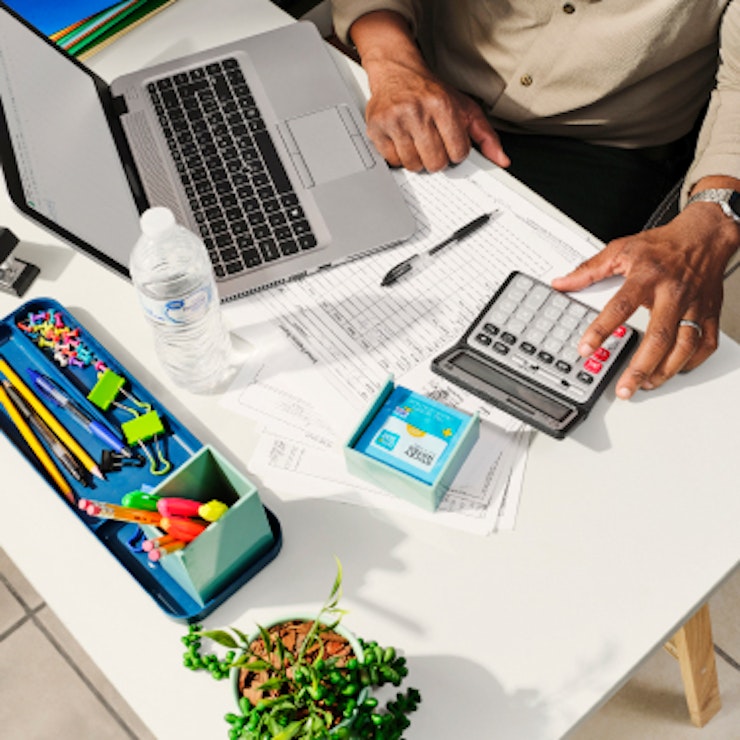
The use of laptops is more prevalent in the workforce than ever before, but the increasing reliance on remote devices for work does not come without risk. However, there are ways to reduce that risk, mitigate potential attacks, and respond quickly to security breaches if and when they occur. Here are some strategies that employers and employees alike can adopt to keep employee laptops secure.
Set strong passwords
The first step to safeguarding sensitive information on a laptop is simple: Set a strong password. A strong password is one that includes a combination of uppercase and lowercase letters, numbers, and special characters. The more unpredictable the password is, the better. To take it a step further, single sign-on (SSO) solutions and password managers can enhance security by simplifying the login process while simultaneously generating and managing complex passwords. Finally, educate employees on best practices for password management — like using a unique password for each website.
[Read more: What Is Single Sign-On?]


Consider different authentication methods
Passwords alone, however, are not always enough. Passwordless options, such as tokens, verification apps, and biometrics, can further bolster security.
Tokens, such as hardware or software-based security keys, generate unique codes. Meanwhile, verification apps rely on mobile devices to generate one-time passwords or push notifications for authentication — and are a very user-friendly option. Lastly, biometrics can include fingerprint or facial recognition. This is a higher level of security and may not be necessary for your organization, though it’s smart to explore different options.
Whichever authentication method you choose, have a response plan in place. Even the best security systems aren’t completely foolproof, but reacting in a timely manner can make all the difference in how much impact an attack has on your business.
Encrypt hard drives and back up data
Encryption transforms hard drive data into an unreadable format, ensuring that even if a laptop is stolen or compromised, the data remains protected. Regular data backups are essential for mitigating the impact of potential incidents. In the event of data loss, hardware failure, or a security breach, having recent backups allows organizations to restore critical data and resume operations. It’s recommended that organizations establish a routine backup system to ensure backups are conducted regularly.
The first step to safeguarding sensitive information on a laptop is simple: Set a strong password.
Invest in laptop privacy tools and equipment
Consider buying laptop privacy tools and equipment as an investment in your business. While remote work is now more commonplace, there are ways to maintain trust with employees even while they work from home. Encourage employees to use webcam covers that physically block the camera when not in use, protecting against unauthorized surveillance. Privacy screens can also be applied to laptop displays, limiting viewing angles and shielding sensitive information from prying eyes.
Finally, you may also want to require employees to use virtual private networks (VPNs) to establish a secure and encrypted connection between the laptop and the organization's network, protecting data transmission from potential cyber threats.
[Read more: 6 Tips to Make Your Hybrid Workforce More Secure]
Keep applications and systems up to date
Stay current with the latest security updates and patches for operating systems, web browsers, antivirus/anti-malware programs, and other applications. These updates often contain critical security fixes that address vulnerabilities and protect against emerging threats. Conducting regular vulnerability scanning and system auditing on employee devices helps identify any potential weaknesses or outdated software that could be exploited by attackers.
Additionally, remind employees to keep an eye on what they open and download. While their laptops should already be equipped with virus protection software, having a keen eye can act as an extra layer of protection. Employees should be encouraged to scan attachments before downloading them.
Empower and educate employees
By providing comprehensive training on best practices and raising awareness about common scams and social engineering tactics, organizations can mitigate the risk of human error leading to security breaches.
When it comes to thwarting cyber attacks, education is key. Employees should be trained on the following:
- How to identify phishing emails.
- How to create a strong password.
- How to update software on a regular basis.
- Using caution when sharing sensitive information.
- Avoiding interaction with suspicious links or malicious attachments.
Ongoing training sessions should be conducted to keep employees informed about emerging threats and new security measures. Establish clear security policies and guidelines to reinforce the importance of maintaining and adhering to security protocols. By empowering employees with knowledge and providing regular training, organizations can cultivate a security-conscious culture and strengthen the first line of defense against potential threats.
[Read more: How to Protect Employee Privacy]
CO— aims to bring you inspiration from leading respected experts. However, before making any business decision, you should consult a professional who can advise you based on your individual situation.
CO—is committed to helping you start, run and grow your small business. Learn more about the benefits of small business membership in the U.S. Chamber of Commerce, here.






